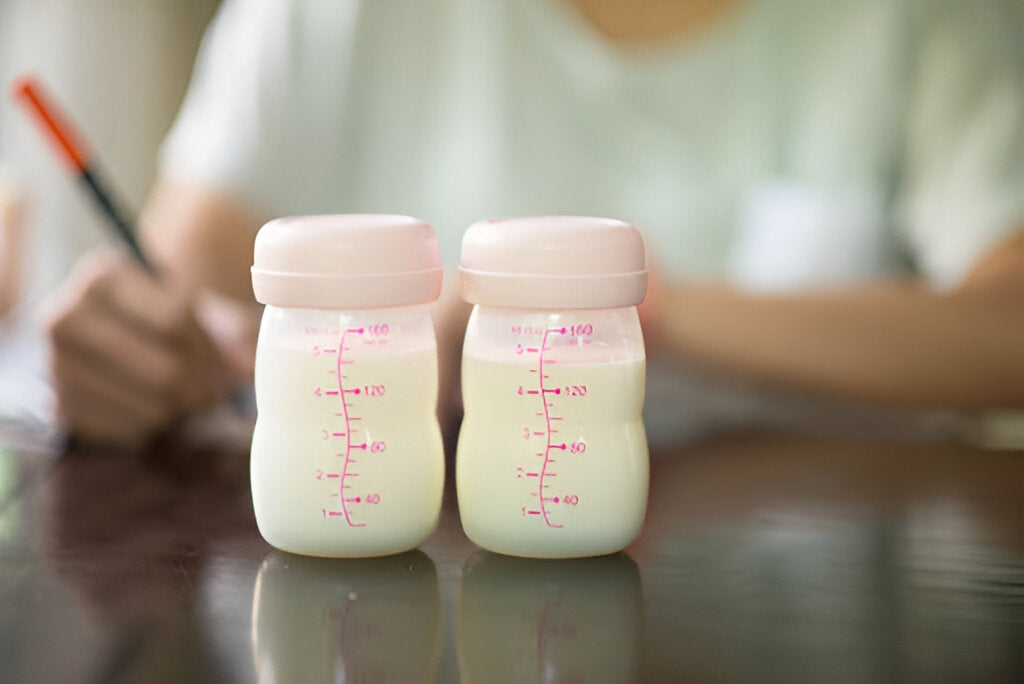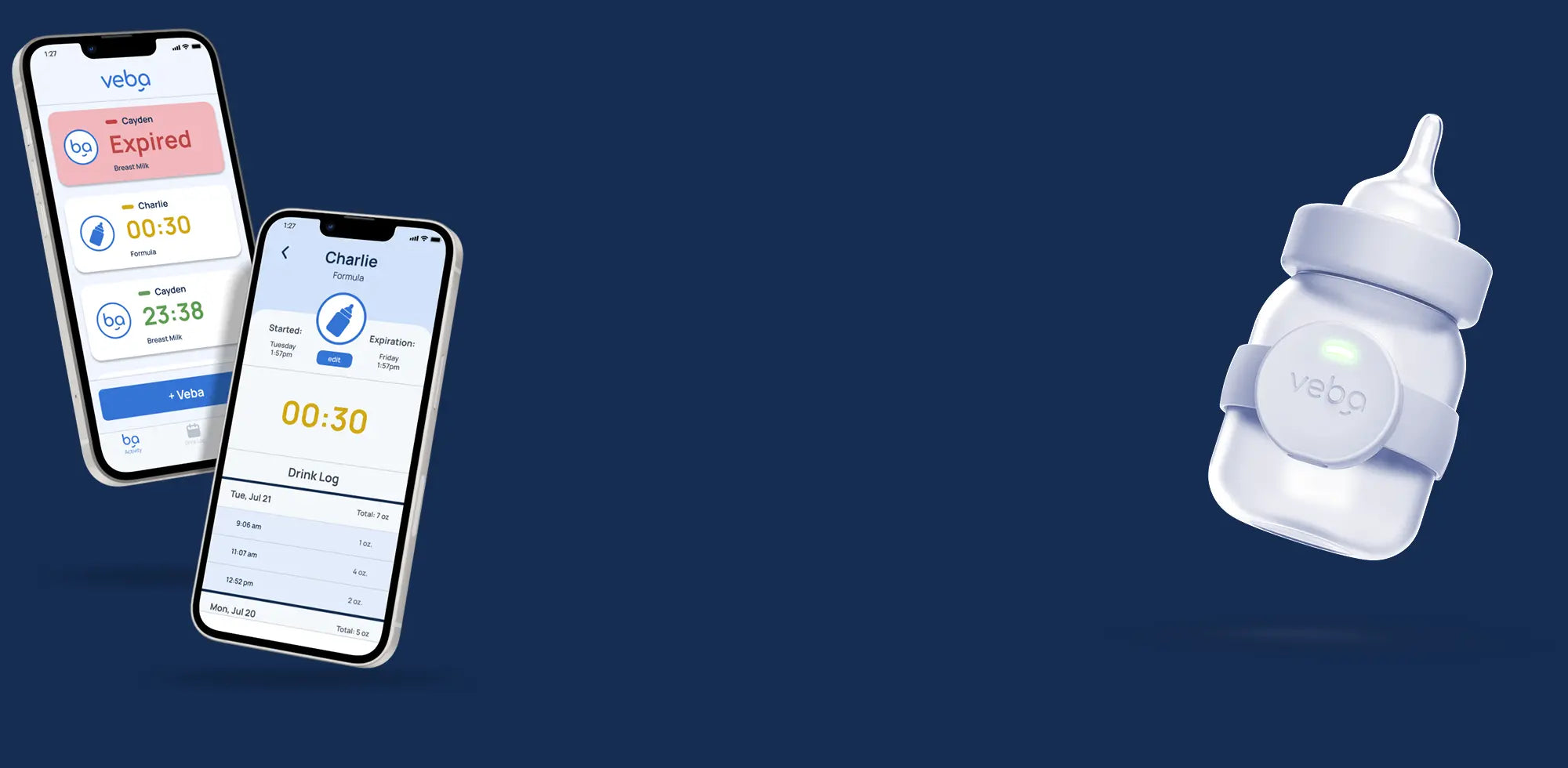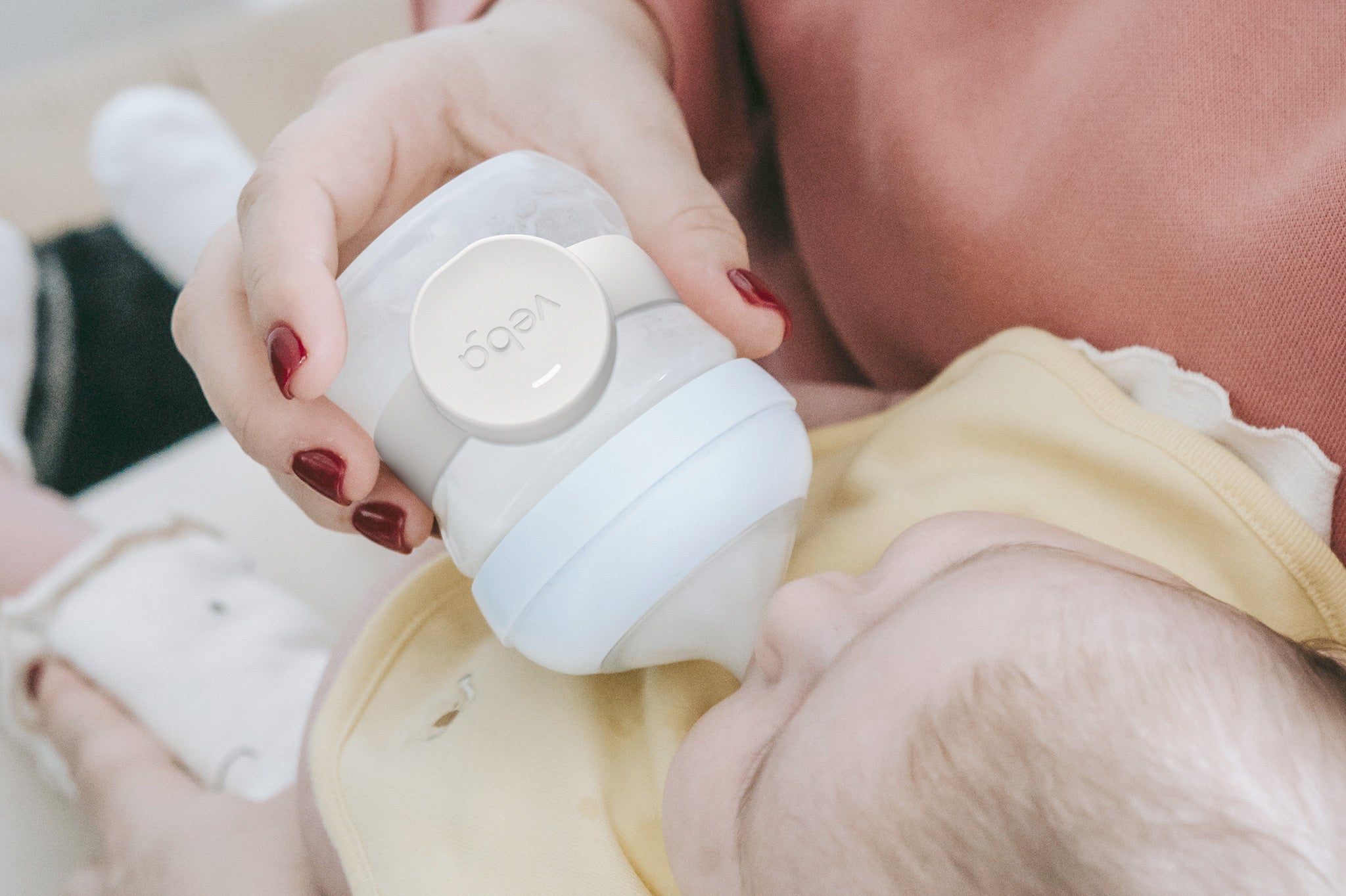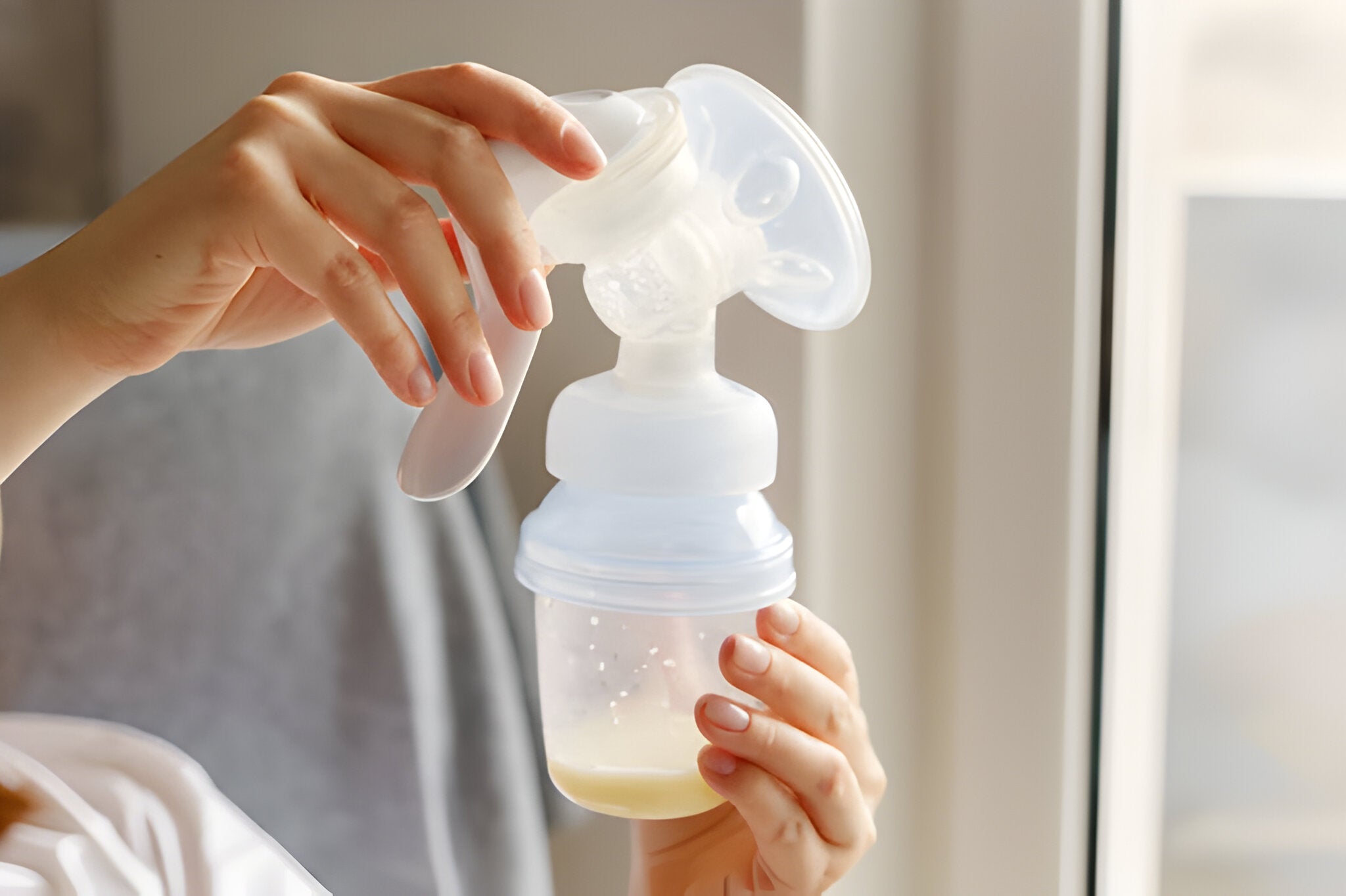When you’ve got kiddos at home, storage is always a problem. We get it! But, the really tough part is actually not about the toys, sports equipment, piles of shoes, or the old furniture — stuff that you want to keep but don’t really have a place for. You know what we’re really talking about… breastmilk storage! The precious packages of what we like to think of as infant ambrosia. But unlike in the stories of goddesses of Greek myths, you really have to be careful to store this stuff correctly to keep your little one safe and healthy.
That means, from preparation and sanitizing to temperature and dating, modern mamas and papas have a whole lot to keep track of when it comes to breastmilk storage. So, to make it just a little bit easier on you, we’ve detailed all the facts from the experts to create this guide in line with CDC guidelines. Soon, worrying about keeping the precious liquid safe can be a thing of the ancient past. All you have to do is keep reading to start slaying the storage of mom’s milk!
Prepping
Ok, we’re going to be honest with you. There is a lot to learn. Before we even get into this, first things first. You simply have to wash your hands with lots of soap and warm water. If you can't access a sink, you’ll need a good hand sanitizer that is alcohol based — at least 60%. Then, put that detective hat on and really scrutinize the cleanliness of your pump kit and tubing to make sure it's really nice and clean. If there's even a clue of mold in that tubing, get rid of it right away. We mean it, mama! Last prep step, make sure everything is all clean. We’re talking about grabbing a disinfectant wipe and going to town on countertops, pump dials, and even power switches. Everything sparkling? Then it’s time to start pumping!
Holding
We’ve expressed how we feel about prep and pumping, now it's time for getting into the nitty gritty of what you've expressed. We’re hoping it’s a whole lot of milk! In order to keep that good stuff safely stored, you're going to need to pack it in some really great plastic or glass containers that are actually meant for breastmilk. Never in disposable bottle liners or plastic bags that aren’t meant for storing breastmilk. So, if not breastmilk storage bags, we’re talking food grade containers with a lid that fits to perfection. And of course, they should be cleaned and or sanitized (see our tips below). Now here’s the really important part. You’ll have to put your detective hat back on for this one…. Check everything you’re using for milk storage to make sure it's BPA free. That means avoiding any plastics that have the cute little recycling symbol with a 7 inside it. You know the one with the three arrows that are twisting into a triangle? Turns out that one is not so cute…
Packing
Once it’s all packed and ready to store, we’ve got to make sure we can keep track of it. That means labeling the milk with the date it was expressed. If it's going to be given to a daycare, be sure to add your baby’s name to the bag too. If you decide to freeze it, be sure to pack it in small abouts — about 2 to 4 ounces. Otherwise you risk wasting precious milk. And we definitely don’t want that! Before you pop it in the freezer (if that’s your plan) be sure to have an inch of extra room at the top of the containers because breastmilk expands when frozen. Oh and don’t forget, breastmilk reaches an unsafe temp for preservation at above 104°F or 40 °C. So, be sure to keep it cool in the meantime!
Stashing
Next up, where's the container going? We’ve got options! The countertop at 77℉ (25℃) or colder which equated to room temperature, the fridge 40℉ (4℃), the freezer 0℉ (-18℃) or colder, or a cooler with ice packs to keep it as cold as you can when on the go. But, if it's going in the fridge or freezer don't put it in the door. Tuck it far enough toward the back that you don’t have to worry about the inevitable temperature changes when hubby/wifey or the kids are standing with the door open hunting for snacks. Ideally, pop the milk inside the freezer in order of dating so you can grab the oldest milk to use first. Because, well, according to breastmilk storage guidelines, you should always use the oldest first!
Keeping
Here’s the deal. We’ve got a whole [guide on freshness] that you should really comb through so you can become a master of mama’s milk. But we’re going to run through the bare basics real quick for your convenience. We know you’re busy! So, here it goes… Once milk is expressed it should be frozen right away if you don't plan to use it within 4 days. Otherwise, it can be kept on the counter for up to 4 hours, in the fridge for up to 4 days, and in the freezer for 6 months for the best quality or an absolute maximum of 12 months. If you’re on the go, you can keep it in an insulated cooler with frozen ice packs for 24 hours. But be sure to use it or stash it in the fridge or freezer when you get where you’re going right away. After it's been frozen and thawed, it keeps on the counter for 1-2 hours, in the fridge for 24 hours, and can never go back in the freezer again. We mean it, never refreeze your milk, mama! But if your baby sipped on the bottle and didn't finish it, all bets are off! That milk has to be used or tossed within 2 hours after final contact with those sweet little lips.
Cleaning
Now that the baby is all fed, we’re sure you could use a break. But here’s something you’ll always need to do to be ready for next time. Getting everything nice and clean. So, be sure to disassemble feeding tools and wash the pump and all feeding parts in a clean bowl with soap and water. While it might be tempting to fill up the sink insead, ignore the urge. The sink is likely to have more than a few germs that can contaminate the items. A definite no-no from us (and the CDC’s breastmilk storage guidelines too)! Once they're nice and clean, rinse really well under running water. Then, leave the items on a clean dish towel or paper towel to air dry thoroughly so they don't get moldy. Once they’re dry as a bone, use clean hands to pop the items in a clean, safe area away from germs and debris.
Sanitizing
Ok, so there’s one more very important thing to know: sanitizing. This step can be crucial, especially if your baby is younger than 2 months old, was born prematurely, or has a weakened immune system. In these cases feeding items should be carefully sanitized daily or even more often. If your baby is strong, healthy, a little bit older, and cleaning was super well done, you can do this step less often or according to your medical team’s recommendations. Ok, are you ready? Here’s how you can do it. Option 1, boil the items in hot water for five minutes after they've been cleaned. Option 2 is to steam them in the microwave or a special plug-in steam system after cleaning. Just be sure to use the appliance to sanitize according to the manufacturer's instructions. Option 3, toss them in the dishwasher on a hot water/heated drying cycle setting, or the sanitize setting, and you’re all set!
That’s all folks! Follow these expert guidelines and you’ll be slaying breastmilk storage in no time! But hey, we understand that this is a whole lot to take in. Properly storing and keeping track of breast milk freshness is no walk in the park! Even for parents that should practically have an honorary PhD in this topic by now, losing track of how long a bottle has been on the countertop or misremembering the date it went in the fridge happens — even to the best of us!
But, making mistakes when it comes to proper breastmilk storage can be seriously risky. In addition to a decrease in nutritional value when the milk has been out for too long, it starts to grow harmful and even potentially dangerous bacteria too. That means feeding your baby expired breast milk can lead to food poisoning. This could look like an upset stomach, throwing up, spitting up, or even getting a fever. We don't want to scare you mama, we just want to help!
At Veba Baby, our mission is to empower parents and caregivers with the best information, tools, and routines that support them in providing their baby the freshest milk and the best nutrition possible. That’s the whole reason supermom Veon (otherwise known as our wonder woman of a founder) created Veba Baby in the first place! It’s the one and only smart milk monitor on the market using government agency guidelines to keep track of your breastmilk and formula freshness, all in real time. A tiny but mighty device that saves you time, energy and a whole lot of worry. All for the freshest, most nutritious milk for your baby, and for your peace of mind too. If this sounds like a dream come true, you can get Veba for your household by visiting us at www.vebababy.com. Or if you’re looking to stay up to date with the experts on feeding, stay tuned to our blog here. Until then, keep it fresh!




